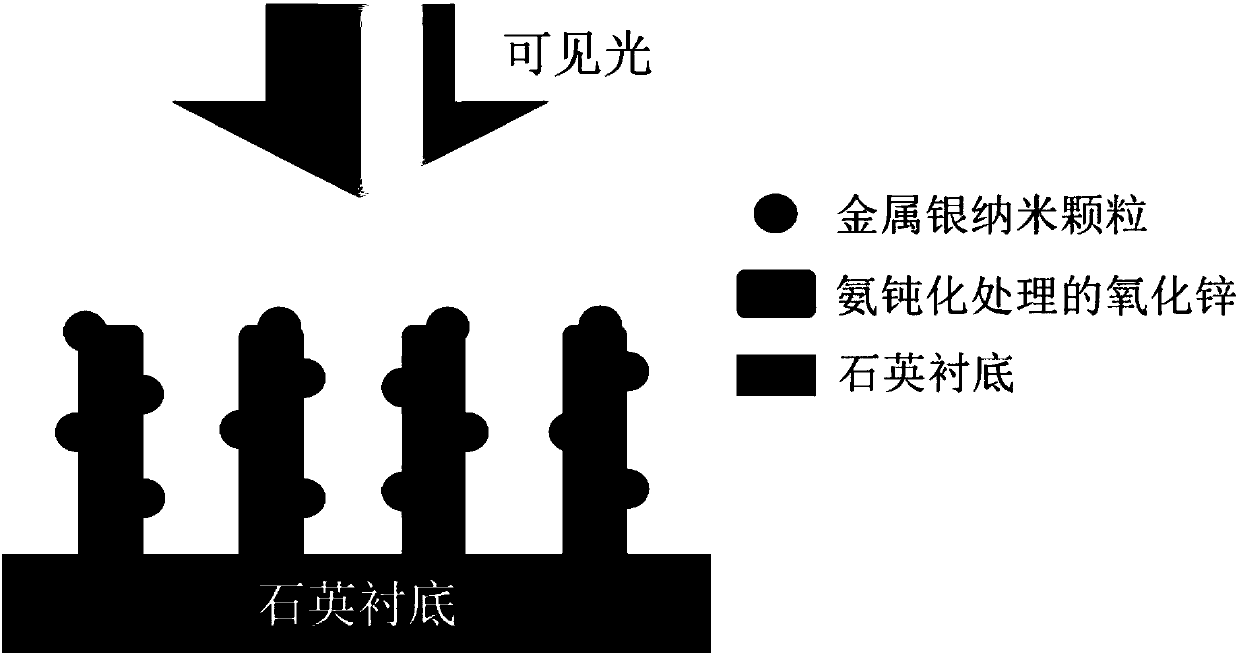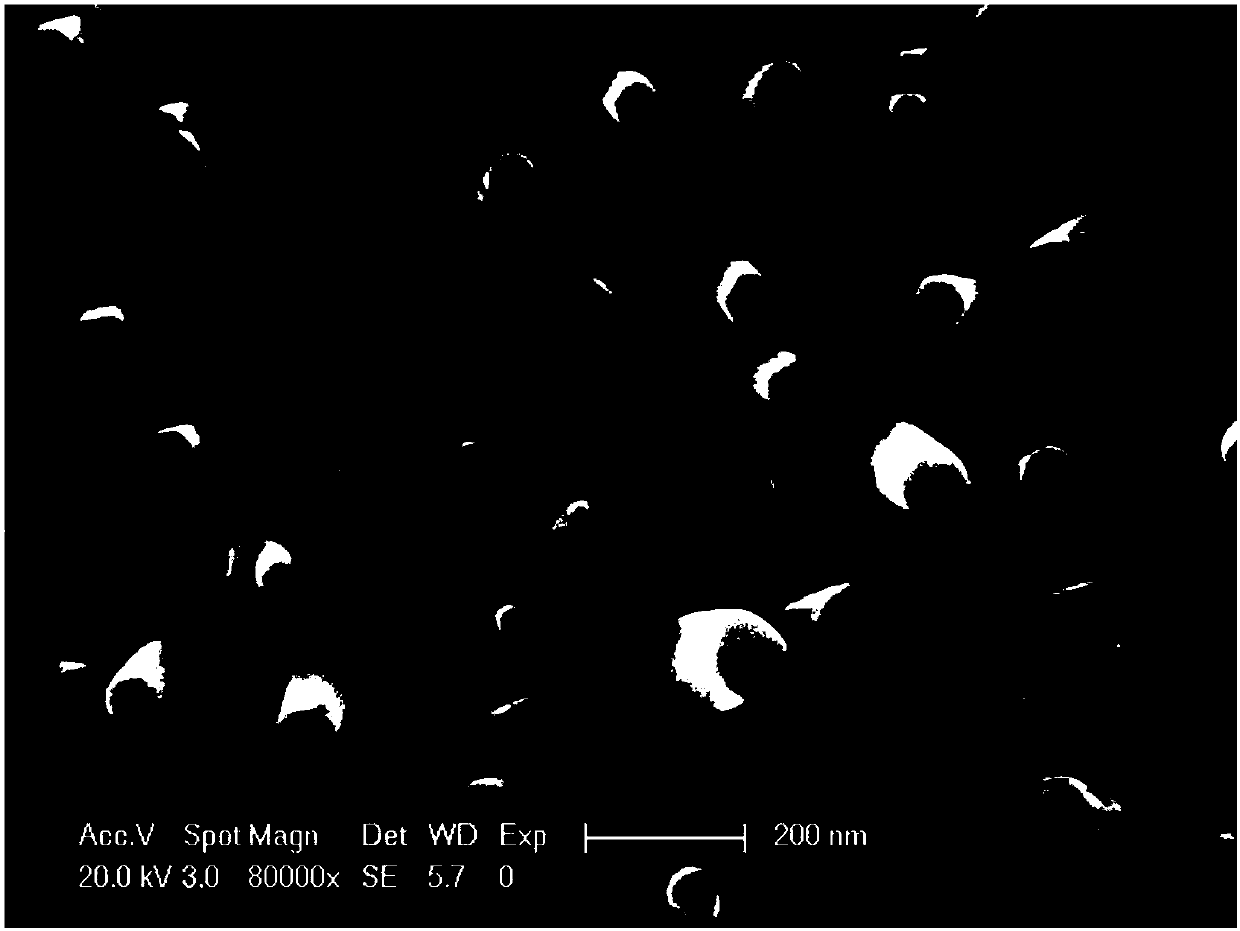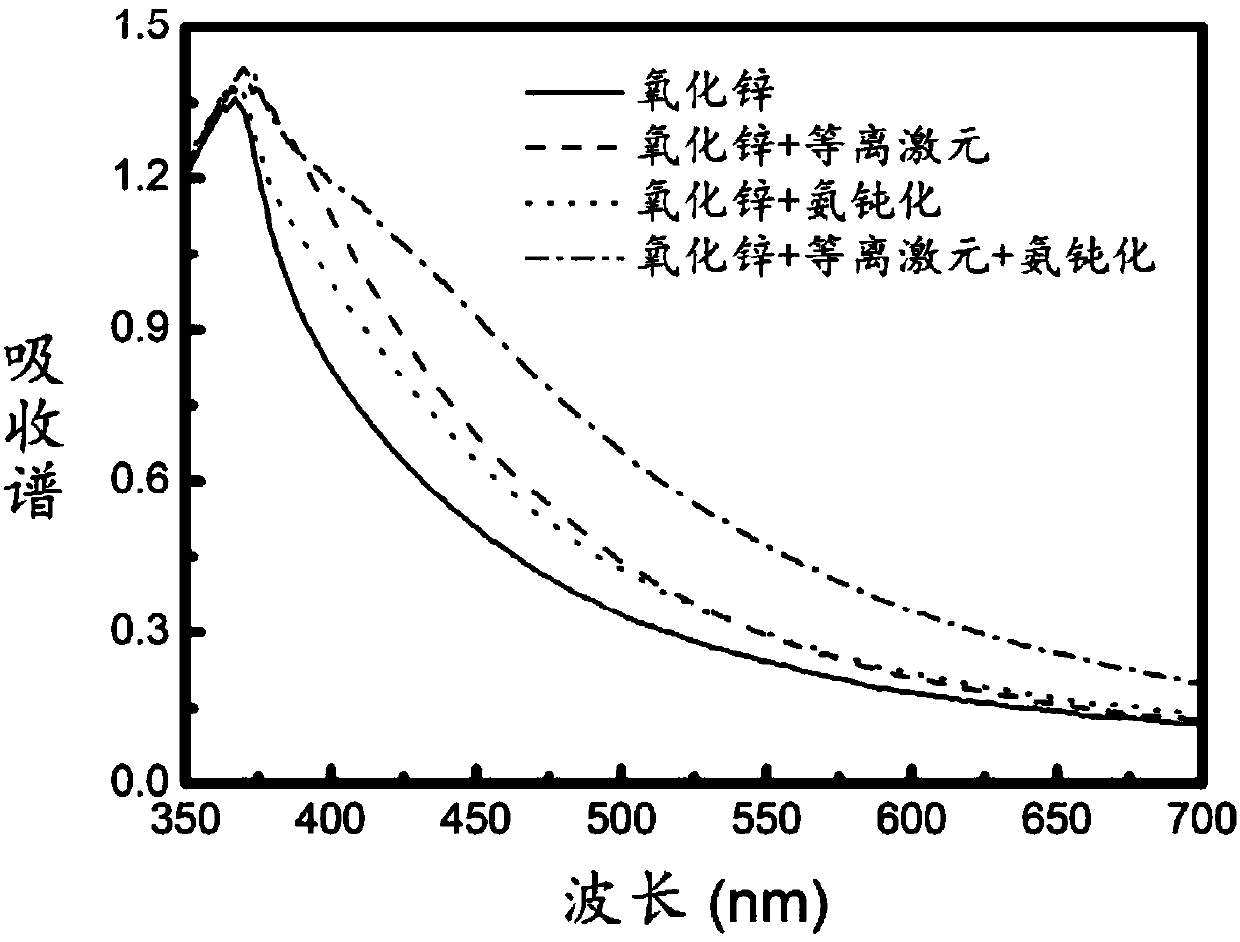Method for synergistically enhancing photocatalysis of ZnO through plasmon and ammonia passivation
A plasmonic and zinc oxide technology, applied in the field of photocatalysis, achieves the effect of wide application prospects
- Summary
- Abstract
- Description
- Claims
- Application Information
AI Technical Summary
Problems solved by technology
Method used
Image
Examples
Embodiment 1
[0034] Preparation conditions: room temperature, class 100 clean room;
[0035] The specific steps are:
[0036] (1) Choose a zinc oxide (ZnO) substrate in the (100) crystal phase, with a volume of 10×10×0.5mm 3 ;
[0037] (2) Passivate the zinc oxide substrate with high-pressure ammonia, pass through 0.4MPa high-purity ammonia gas, and heat it in a high-purity ammonia gas environment at 300°C for 30 hours;
[0038] (3) Take out the zinc oxide after ammonia passivation, and let it cool naturally for 12 hours to room temperature;
[0039] (4) Vacuum thermal evaporation treatment is performed on the zinc oxide after ammonia passivation to form a metal nano film;
[0040] (5) Perform annealing treatment on the vapor-deposited zinc oxide, pass high-purity nitrogen gas, and control the flow rate of nitrogen gas to 150ml / min; anneal at 350°C for 5 minutes in a nitrogen environment to form metal nanoparticles. Cool in the tube after power off for 1 hour.
[0041] We characterize...
Embodiment 2
[0043] Preparation conditions: room temperature, class 100 clean room;
[0044] The specific steps are:
[0045] (1) Choose a zinc oxide (ZnO) substrate in the (100) crystal phase, with a volume of 10×10×0.5mm 3 ;
[0046] (2) Passivate the zinc oxide substrate with high-pressure ammonia, pass through 0.8MPa high-purity ammonia gas, and heat it in a high-purity ammonia gas environment at 350°C for 24 hours;
[0047] (3) Take out the zinc oxide after ammonia passivation, and let it cool naturally for 12 hours to room temperature;
[0048] (4) Vacuum thermal evaporation treatment is performed on the zinc oxide after ammonia passivation to form a metal nano film;
[0049] (5) Perform annealing treatment on the evaporated zinc oxide, pass high-purity nitrogen gas, and control the flow rate of nitrogen gas to 100-ml / min;
[0050] Annealing at 400° C. for 4 minutes in a nitrogen environment to form metal nanoparticles. Cool in the tube after power off for 1 hour.
Embodiment 3
[0052] Preparation conditions: room temperature, class 100 clean room;
[0053] The specific steps are:
[0054](1) Choose a zinc oxide (ZnO) substrate in the (100) crystal phase, with a volume of 10×10×0.5mm 3 ;
[0055] (2) Passivate the zinc oxide substrate with high-pressure ammonia, pass through 0.6MPa high-purity ammonia gas, and heat in a high-purity ammonia gas environment at 400°C for 20 hours;
[0056] (3) Take out the zinc oxide after ammonia passivation, and let it cool naturally for 12 hours to room temperature;
[0057] (4) Vacuum thermal evaporation treatment is performed on the zinc oxide after ammonia passivation to form a metal nano film;
[0058] (5) Perform annealing treatment on the vapor-deposited zinc oxide, and anneal at 400° C. for 3 minutes in a nitrogen environment to form metal nanoparticles. Cool in the tube after power off for 1 hour.
[0059] For the materials prepared in Examples 2 and 3, the activity of the photocatalyst was characterized ...
PUM
| Property | Measurement | Unit |
|---|---|---|
| thickness | aaaaa | aaaaa |
| size | aaaaa | aaaaa |
| particle size | aaaaa | aaaaa |
Abstract
Description
Claims
Application Information
 Login to View More
Login to View More - R&D
- Intellectual Property
- Life Sciences
- Materials
- Tech Scout
- Unparalleled Data Quality
- Higher Quality Content
- 60% Fewer Hallucinations
Browse by: Latest US Patents, China's latest patents, Technical Efficacy Thesaurus, Application Domain, Technology Topic, Popular Technical Reports.
© 2025 PatSnap. All rights reserved.Legal|Privacy policy|Modern Slavery Act Transparency Statement|Sitemap|About US| Contact US: help@patsnap.com



